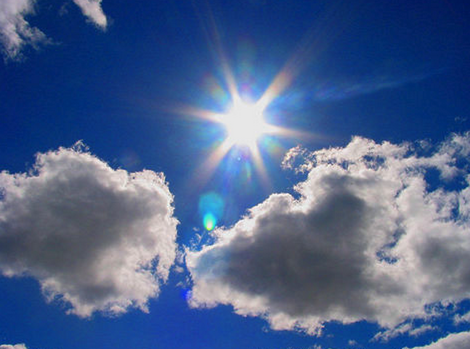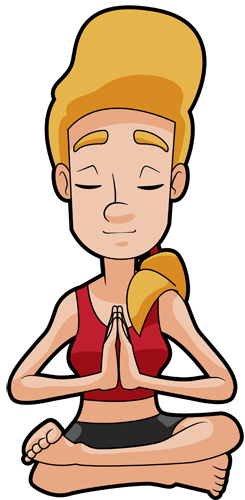Mental Health | Zuranolone improves depressive Symptoms within 14 days

 Mental Health and new studies for Depression relief
Mental Health and new studies for Depression relief
Zuranolone, an investigational neuroactive steroid, improved depressive symptoms in a majority of patients within a 14-day treatment course, Sage Therapeutics reported.
Topline results from the ongoing phase 3 open-label SHORELINE Study also demonstrate zuranolone was well-tolerated in patients taking 30 mg, and among patients treated with the 50 mg dose after the study protocol was changed in May to include it, according to a press release from Sage.
“This data from the SHORELINE Study show that medically-oriented, as needed treatment for depression has the potential to be a compelling option for many patients diagnosed with MDD,” said Sage chief executive officer Jeff Jonas, MD.
“Approximately 70% of patients who participated in the study only needed one or two treatment courses, a total of two to four weeks of treatment with zuranolone 30 mg, which we believe will be the minimally effective dose, if our development efforts are successful.”
Zuranolone (SAGE-217) is a once-daily oral two-week therapy being developed as a treatment for major depressive disorder (MDD) and postpartum depression (PPD). It has similar pharmacology as the intravenous drug brexanolone (Zulresso), approved by the US Food & Drug Administration (FDA) in 2019 for the treatment of postpartum depression.
A neuroactive steroid GABAA receptor positive allosteric modulator, it has been granted Breakthrough Therapy Designation by the FDA. Sage plans to report more data from the 30 mg dose group in the first half of 2021.
Exploring the Role of GABA in Psychiatric Treatment
The yearlong longitudinal SHORELINE study is evaluating the safety, tolerability, and need for repeat dosing with zuranolone in adults aged 18 to 75 years who have MDD, defined by a baseline total score of ≥ 20 on the Hamilton Depression Rating Scale (HAMD-17).
The initial 725 participants had an average baseline score of 25.3 ± 4.1. After the first 14-day course of once-nightly zuranolone 30 mg, patients had a mean change from baseline of -14.9 ± 7.1 (n=640); 458 (71.6%) patients showed a response and 255 (39.8%) achieved remission, defined as a HAMD-17 score of ≤ 7.
Some 304 (42%) of the participants were on other antidepressant therapy, which was continued, and 421 (58%) were not. “There were no meaningful differences in efficacy outcomes between the two groups,” Sage reported.
Repeat Treatments
Need for additional treatment courses was assessed based on a Patient Health Questionnaire (PHQ-9) score of ≥10 and HAMD-17 score of ≥20. There were at least 56 days between each 14-day course.
From the initial cohort, 494 patients who had responded continued after the first treatment course and 274 (55.5%) of them were retreated with zuranolone at least once; 132 (26.7%) used a total of 2 courses, 66 (13.4%) used 3 courses, 51 (10.3%) used 4 courses, and 27 (5.5%) used 5 courses. At the time of data analysis, patients who responded to the initial course used a mean of 1.9 treatments per year.
Efficacy and safety outcomes were similar to those from the first course, and there was no correlation between the number of zuranolone retreatments and the use of other antidepressants, the company reported.
Among patients who received 1 or more retreatments, overall adverse event rates were 151 (53.7%) in the second course, 56 (38.1%) in the third, and 28 (35.9%) for the fourth course.
An Increased Dosage
In May, participants being retreated began receiving zuranolone 50 mg, and a new cohort of patients started treatment at that dose.
The 52 patients in the new cohort had a mean HAMD-17 baseline score of 25.1 ± 3.1. At day 15, the mean change was -15.9 ± 6.6 (slightly higher than in the initial cohort). A total of 39 (75.0%) patients responded to a 14-day treatment course and 25 (48.1%) achieved remission, also both higher than among the 30 mg cohort.
In the 76 (38%) new participants with safety data available, somnolence, dizziness, sedation, headache, and tremor were more frequent than in the 30 mg group, but were similar in severity. Among the 48 participants who has previously received 30 mg zuranolone, a higher number of and more intense adverse events were reported while taking 50 mg.
---
Part 2 Update Mental Health | Zuranolone Phase 3 Trial Yields More Positive Data
Sage Therapeutics has released complete data from a 12-month study of patients taking 30 mg of the investigational oral neuroactive steroid zuranolone for major depressive disorder (MDD) and interim data on a cohort receiving a 50 mg dose.
“Today we are announcing additional positive data from the SHORELINE Study that demonstrate continued strong results from the 30 mg dose and strengthens our confidence in the potential of the 50 mg dose,” said Sage chief executive officer Barry Greene. “Designed as a naturalistic study, these data approximate real-world evidence of use of zuranolone at 30 mg and 50 mg doses.”
Zuranolone, a GABAA receptor positive allosteric modulator, is a once-daily, two-week therapy in development for the treatment of MDD and postpartum depression. The phase 3 open-label study is evaluating the safety and tolerability of the 30 mg and 50 mg doses in adults aged 18-75 years who have MDD and a baseline total score of ≥20 on the Hamilton Rating Scale for Depression (HAMD-17).
Zuranolone Improves Depressive Symptoms Within 14 Days
In patients who received a 14-day course of zuranolone 30 mg, the need for additional courses was assessed according to scores on the HAMD-17 and the Patient Health Questionnaire (PHQ-9). Patients could receive up to 5 treatments over the 12-month study period, with at least 56 days between courses. The newly released data show zuranolone (SAGE-217) was “generally well-tolerated” in both dose cohorts, and adverse events were “generally consistent” with results from previous zuranolone trials, according to a press release from Sage.
The newly released data show zuranolone (SAGE-217) was “generally well-tolerated” in both dose cohorts, and adverse events were “generally consistent” with results from previous zuranolone trials, according to a press release from Sage.
In the 30 mg cohort, the most common treatment emergent adverse events were headache (14.2%), somnolence (11.9%), and dizziness (7.4%). In the 50 mg cohort, somnolence, dizziness, and sedation were observed to be more frequent, but were similar in severity as in the 30 mg group. Most adverse events in both groups were mild or moderate, Sage reported.
The analysis also found that patients who had a decrease of ≥50% in their HAMD-17 baseline score after their initial 14-day course of zuranolone 30 mg required a mean of 2.2 treatments over the 12-month study. Among the 489 patients who responded to the initial 30 mg treatment and stayed in the study, 210 (42.9%) patients used only the single first course, 125 (25.6%) used a total of 2 courses, 58 (11.9%) used a total of 3, 53 (10.8%) used a total of 4, and 43 (8.8%) used a total of 5.
Sage plans to report more data on the 50 mg dose cohort in late 2021.
Sage is developing zuranolone in the United States with Biogen and the companies will market the drug together if development efforts are successful and it is approved by the US Food & Drug Administration (FDA). The FDA has previously granted zuranolone the Breakthrough Therapy Designation.
Zuranolone’s pharmacology is similar to that of the intravenous drug brexanolone (Zulresso), which was approved by the FDA in 2019 for the treatment of postpartum depression.


